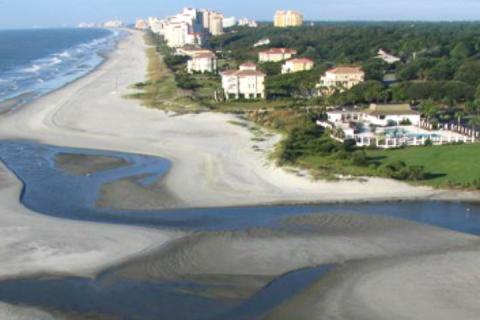
Myrtle Beach is an economic pearl in South Carolina’s grand strand, a sixty-mile stretch of beaches and resort communities that support a multi-billion dollar tourism industry. Fishing and water sports top the list of local attractions, making coastal water quality a priority concern. Addressing that concern, however, is a challenge along this heavily developed coast, where much of the polluted stormwater runoff flows into “swashes,” or tidal creeks that traverse beaches to connect directly to the ocean. To manage stormwater in a way that protects water quality, local decision makers need more information about the role that these swashes play in fueling hypoxia, or low levels of dissolved oxygen, in coastal waters.
In response, North Inlet-Winyah Bay Reserve spearheaded a project to investigate how swashes collect, transform, and export the nutrients and organic matter that fuel hypoxia in the coastal waters of the Myrtle Beach area.